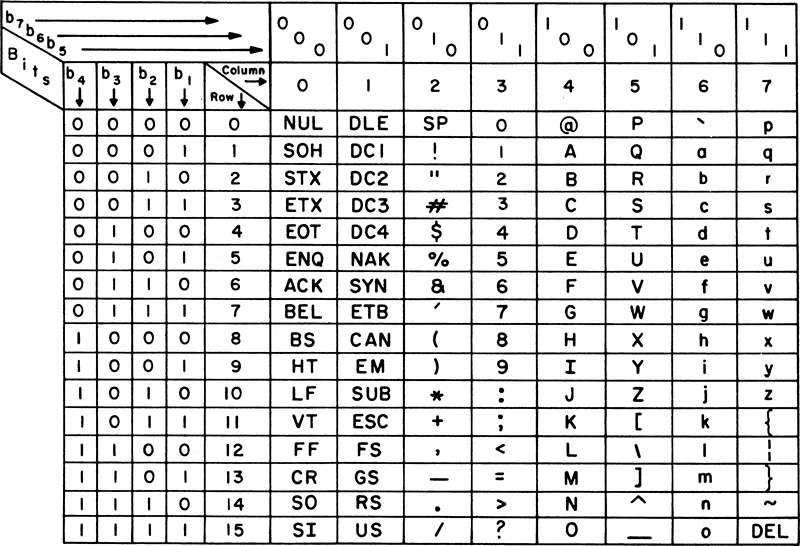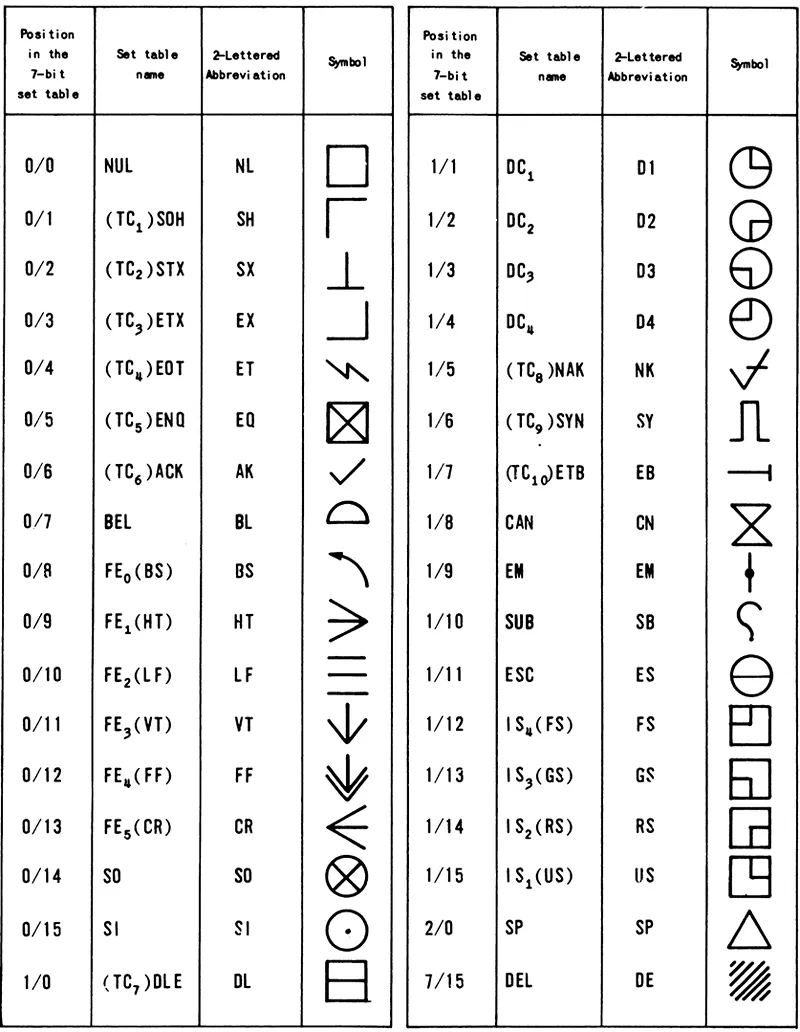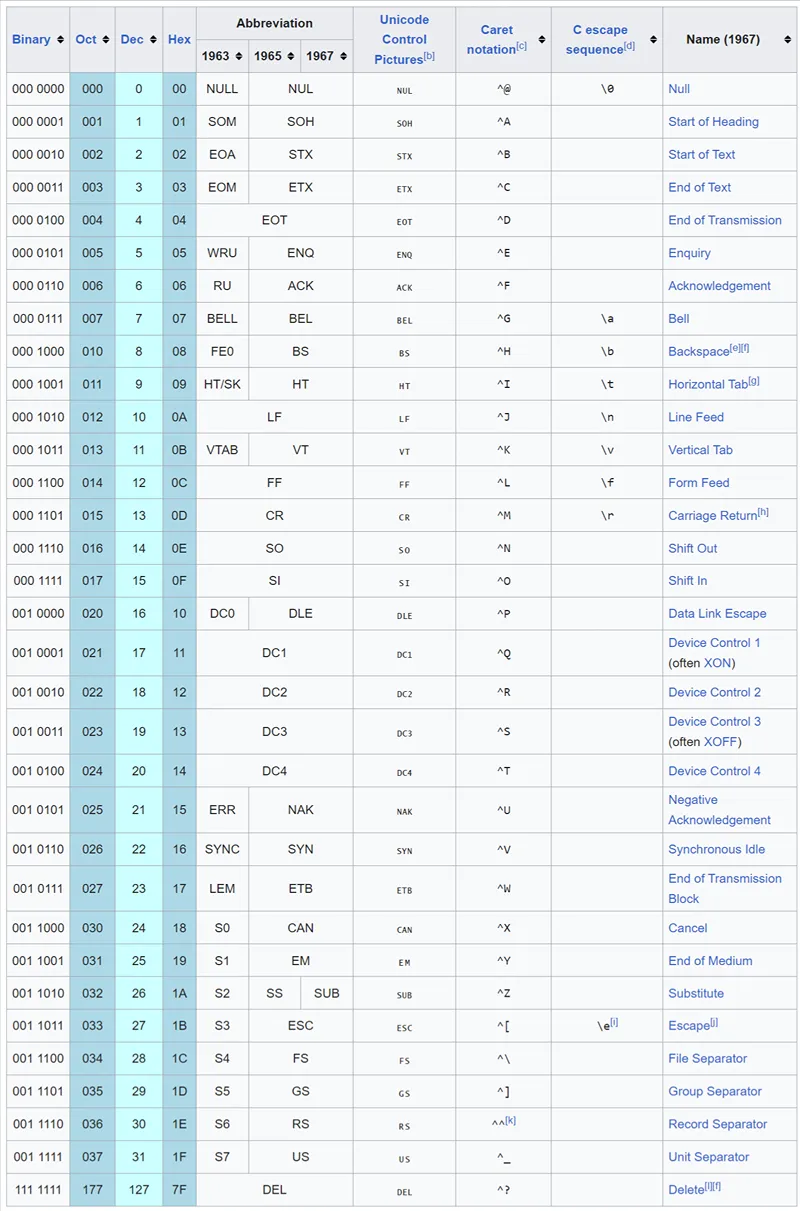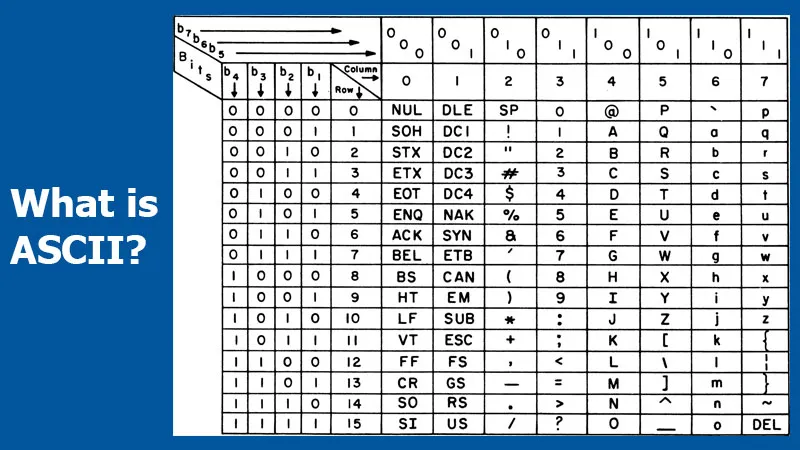ASCII + American Standard Code for Information Interchange
ASCII (American Standard Code for Information Interchange) is highly familiar for its similar character encoding format, including text data on computers and the Internet. In standard ASCII-encoded data, you will be getting a unique value for 128 alphabetic, numeric, or special additional characters, and you may even have control codes.
Certain IBM systems utilize the same code-named Extended Binary-Coded Decimal Interchange Code (EBCDIC). Whereas, the majority of computer systems make use of full bytes to send an ASCII character. This can be possible using various hardware and software companies- who have done their own nonstandard and mutually incompatible allowances of the official ASCII 128-character set into a 256-character set.
ASCII encoding completely depends on the character encoding utilized by telegraph data. Here, the American National Standards Institute was the first to publish a standard for computing in 1963.
Whereas, the characters for ASCII encoding may include upper- and lowercase letters A through Z, numerals 0 through 9, and basic punctuation symbols. Eventually, you may even happen to use some non-printing control characters, which are initially planned for use with teletype printing terminals.
ASCII characters can be denoted in the following ways:
- It is denoted as a pair of hexadecimal digits – Here, the base consists of 16 numbers, which represent right from 0 through 9 and A through F for the decimal values of 10-15;
- Here, this has three-digit octal (base 8) numbers;
- It is represented as decimal numbers from 0 to 127; or
- On the other way, it as a 7-bit or 8-bit binary
- ASCII characters were generally introduced and encoded into 7 bits & stored as 8-bit characters under the most significant bit – typically, the left-most bit – set to 0.
Why is ASCII important?
ASCII was effectively introduced majorly with the character encoding standard for data processing. We have the most common and modern computer systems which use Unicode, and even known as the Unicode Worldwide Character Standard. Eventually, it’s a character encoding standard that includes ASCII encodings.
On the other hand, the Internet Engineering Task Force (IETF) adopted ASCII as a standard for flawless internet data. This was published in “ASCII format for Network Interchange” as RFC 20 in the year 1969. Then, the request for comments (RFC) document standardized the usage of ASCII for internet data and was acknowledged as a full standard in 2015.
ASCII encoding is authoritatively obsolete, having been substituted by Unicode. Yet, ASCII characters utilize the same encoding right from the first 128 characters of the Unicode Transformation Format 8. Here, you will be getting ASCII text, which is quite compatible with UTF-8.
Then, in 2003 – IETF standardized the usage of UTF-8 encoding for all web content as per RFC 3629.
As a result of this, the majority of computers depend on ASCII or Unicode encoding. The exclusions majorly depend on IBM mainframes which use the proprietary 8-bit code that is known as Extended Binary Coded Decimal Interchange Code (EBCDIC).
How does ASCII work?

ASCII gives you a universally accepted and clear character set for elementary data communications. Whereas, this enables the developers to design interfaces that help both humans and computers to understand easily. ASCII codes are an easy set of strings of ASCII characters that can be easily taken and shown as understandable plain text for people and as data for computers.
Programmers utilize the design of the ASCII character set to shorten certain tasks.
For example, utilizing the ASCII character codes, altering the single bit- can easily convert text right from uppercase to lowercase.
- Here, the capital letter “A” is signified by the binary value:
0100 0001 - On the other hand, the lowercase letter “a” is represented by the binary value:
0110 0001
Non-printable, system codes between 0 and 31. It is available under two types:
- Lower ASCII
- Higher ASCII
Lower ASCII, between 32 and 127. Whereas, this table originates from the older, American systems, that hold a 7-bit character table.
Higher ASCII, between 128 and 255. Whereas, this portion is programmable, characters are generally founded on the language of your operating system or program which you use. Foreign letters are even placed in this section.
ASCII Table and Description

Computers can only recognize numbers, so an ASCII code is a numerical representation of a character which includes ‘a’ or ‘@’ or an action of some sort. ASCII was established a long time ago, and now you can see the non-printing characters, which have rarely been utilized specifically for their original purpose.
Make use of the ASCII character table which includes descriptions of the first 32 non-printing characters. ASCII was effectively designed for use with teletypes, and so the descriptions are somewhere related to the operation that makes easy progress. If someone asks for a CV- though in ASCII format, they just want the ‘plain’ text with no formatting like tabs, bold or underscoring, or any other raw format which are handled by a computer.

Hence, this makes importing the file into their own applications without issues easier. If you create using Notepad.exe, it can give you ASCII text, or in MS Word, you can easily save a file as ‘text only’.
FAQ’s
What is ASCII code, where is it used, and who discovered it?
The American Standard Code for Information Interchange (ASCII) was initially developed under the support of a committee of the American Standards Association (ASA), termed as the X3 committee. With reference to the X3.2 (later X3L2) subcommittee, and much later with the help of the subcommittee's X3.2.4 working group (now INCITS).
